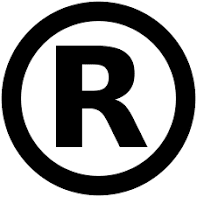Deciphering Trademark Symbols

Much has been written about trademarks symbols, their function and the correct way to use them. A deceptively simple topic, proper usage of trademark symbols is often misconstrued, resulting in significant, though unforeseen, legal implications. In this 2-part series, we will provide a basic overview of trademark symbol usage to help optimize their intended benefits for your business.
A trademark is a valuable asset used to distinguish the source of products/services in the marketplace. Its value is inextricably tied to the brand recognition it helps to promote, which is why many companies are deliberate in their efforts to “stake their claim” by placing a trademark symbol next to their marks.
Although use of a trademark symbol is not required by law in the U.S., there are many benefits to doing so, including building brand awareness among consumers and providing notice to third parties, particularly competitors, of the marks being claimed by a company.
In the U.S., there are three types of trademark symbols:
-

a capital “R” within a circle indicates a trademark registered with the U.S. Patent and Trademark Office;
-

a capital “TM” represents an unregistered mark being used to promote goods; and
-

a capital “SM” denotes an unregistered mark associated with services.
Registered marks for goods and services use
The symbol associated with a registered trademark can be used in connection with either goods or services, but only after the U.S. Patent and Trademark Office (USPTO) has granted a registration. Additionally, this symbol can only be used in connection with the goods and services identified in the federal registration. Only having a pending application with the USPTO or a U.S. state registration is not enough to warrant use of this symbol. Use of the symbol before registration has been granted by the USPTO can even lead to legal issues.
Although there is a fee associated with the registration process, which also typically involves the assistance of legal counsel, the statutory benefits afforded to owners of registered trademarks are not insignificant. A cost-benefit analysis can help a company decide if pursuing registration is the right course of action. More information on the trademark registration process can be found here.
Once a trademark registration has been granted, it is very important to attach the symbol to a trademark in order to preserve certain rights in the event of litigation. Under Section 29 of the Lanham Act, an alleged infringer must have notice that a mark is registered in order for the trademark owner to recover certain damages under the statute. Using the symbol provides “constructive notice” that a mark is registered, meaning that alleged infringers will be deemed to have had notice that the mark is registered without the owner having to demonstrate that the alleged infringer had actual knowledge of the registration. In other words, the owner of a registered mark will not have the burden of proving actual notice of the registration, as long as the symbol accompanied the mark.
Unregistered marks for goods use TM
The TM symbol can be used any time to indicate an unregistered mark associated with goods for sale. It can be used prior to filing for registration, while an application is pending, and even after the USPTO has denied registration. This symbol does not have the same legal protection as the symbol, but it can still be useful for alerting others to the fact that you are using a particular mark as a trademark.
Unregistered marks for services use SM
Similarly, the ℠ symbol can be used any time to indicate an unregistered mark associated with services such as legal, consulting, or entertainment services. While the ℠ symbol should only be used for services, the TM symbol can be used in situations where a company is selling a combination of goods and services.
In summary, trademark symbols certainly play an important role in the U.S. trademark ecosystem. Although their use is not required by law, when a symbol is attached to a mark, it is a clear indication that ownership to the mark is being claimed. For this reason, many businesses will prepare trademark usage guidelines to help ensure that their mark(s) are used appropriately. Likewise, when licensing a mark, the license agreement often includes specific requirements on how the licensee must use the mark and appropriate symbol.
Now that we’ve deciphered the symbols, the next post will offer examples of the proper use of trademark symbols (placement, frequency and proper usage). If you have questions about trademarks or trademark symbols, please contact Michelle Rosenberg at [email protected].
Michelle Rosenberg is a Partner on Outside GC’s Intellectual Property team. She brings over 28 years of experience developing and managing sophisticated IP portfolios, resolving IP-related disputes, and drafting and negotiating complex license agreements. Michelle regularly counsels her clients on issues relating to trademarks, patents and open source compliance, among other matters.
This publication should not be construed as legal advice or a legal opinion on any specific facts or circumstances not an offer to represent you. It is not intended to create, and receipt does not constitute, an attorney-client relationship. The contents are intended for general informational purposes only, and you are urged to consult your attorney concerning any particular situation and any specific legal questions you may have. Pursuant to applicable rules of professional conduct, portions of this publication may constitute Attorney Advertising.